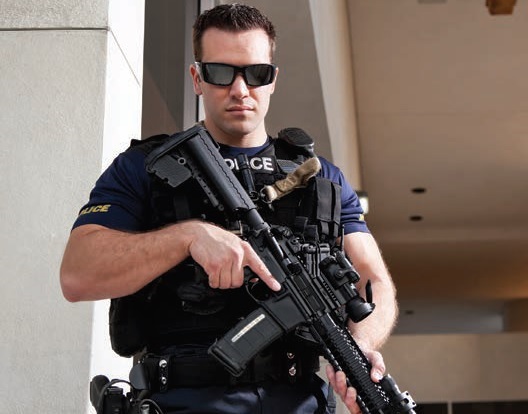
In an era of big data, where every officer and vehicle is a sensor, how do you make sure you integrate, analyse, and disseminate this information swiftly and efficiently? How do you transform your data into actionable intelligence that radically improves decision-making at all levels?
Given everything law enforcement manages has a location, analysing from this geographic starting point provides a basis for anyone – crime analysts, investigators, commanders, and patrol officers – to visualise data in way that helps them identify, predict and ultimately reduce crime. Location-based analytics, also known as location intelligence, provides the platform for understanding the patterns, links and correlations of crimes, criminals and victims through the universal language of maps.
Identifying crime hot spots
Heat maps are produced by mapping crime over a period of time, using colour keys to highlight hot and cold spots. Viewing the information spatially in this way exposes underlying criminal movements and patterns in the data, particularly when it is analysed even further.
For example, by setting date parameters, users can limit the heat map to a specific time period, type of stolen goods, or whether violence was used. They can then overlay further information, such as active warrants or prison releases, to identify suspects based on past criminal behaviour or location.
Other layers provide insights into the dynamics of specific cities and suburbs, including events and locations that draw crime such as festivals, businesses and buildings. Ultimately law enforcers can focus their attention on specific areas to make sure police are present in the right place at right time. The result is more effective and efficient policing and higher levels of service via more efficient allocation of resources.
When this capability is pushed out across a department or station beyond specialist analysts, every member of the force becomes empowered by location-based analytics. So officers can access current crime analysis and suspect information while in the field or during an investigation; while command staff can use location-based analytics to understand trends, make critical decisions when crime spikes, and collaborate with other law enforcement agencies to allocate resources.
Transformation of a crime capital
Once the second deadliest nation in western Europe, Scotland provides a compelling case study into how location-based analytics can aid in cutting crime rates dramatically. Not too long ago, Scots were remarkably three times more likely to be murdered than their English neighbours. Scotland was declared the most violent country in the developed world by the United Nations as more than 2,000 people were subject to an aggravated attack each week.
In Glasgow, Scotland’s most violent city, the local Strathclyde Police set up a Violence Reduction Unit to address violent crime by using location intelligence to prioritise the strategic, focused use of resources.
Part of the solution involved collecting data from external sources, such as hospitals, fire departments, schools and social services organisations. They mapped this with other data related to factors known to impact violent crime – including poverty, housing, unemployment and environment. Hidden trends and patterns in criminal behaviour in the city were revealed, enabling the unit to understand where crimes were happening and why. Armed with this powerfl insight, law enforcers could make predictions about where crimes were likely to occur, so that they could discard their previous ‘needle in a haystack’ approach and better target resources to prevent them…Click HERE to find out more about this article





